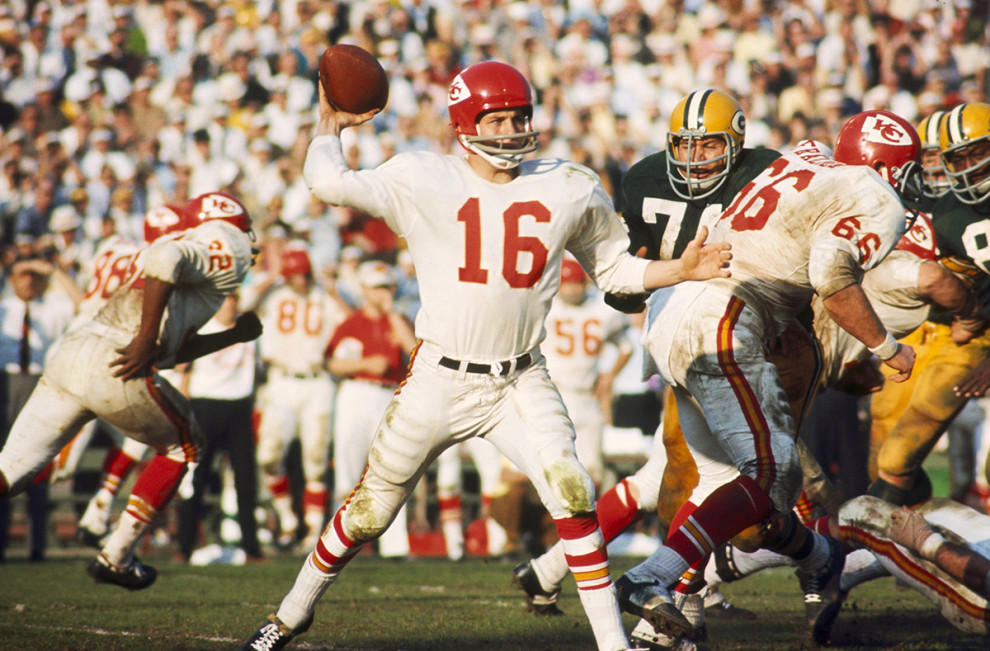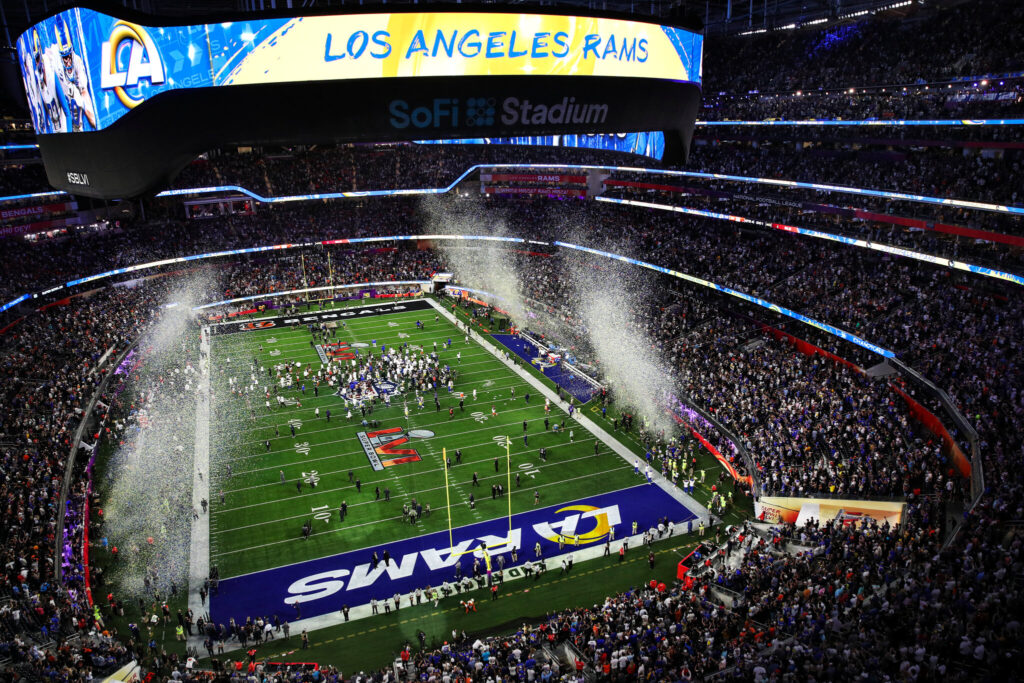The way we watch and consume sports has dramatically changed alongside technology. Sports are now more accessible and immersive than ever thanks to advancements such as the rise of live streaming, social media, and many other contributions.
If you were to look back to just over a hundred years ago from today, the way in which fans stayed up to date with their favorite teams is entirely different. Back then, following recreational sports had just started to become a popular pastime. The main reason being was the ability to finally broadcast information to people via the radio.
The development of radio can be dated to the late 19th century, when scientists and innovators achieved significant advancements in our understanding of the propagation of electromagnetic waves. However, Guglielmo Marconi was the one who effectively used these ideas and made important strides in wireless communication. Wireless telegraphy was invented in 1895 when Marconi transmitted the first wireless signal over a mile-long distance. The foundation for the development of the radio was created by this ground-breaking accomplishment.
When it was first released to the public, the radio was much different from what we know it as today. Back then, you were only able to listen to a few different stations, and it was really only general news and storytelling.
After a while, national networks like CBS and NBC began to form, which allowed for more stations and outlets to be created, and through this people began to hear updates about not only the news, but music, pop culture, and sports. It was from here that sports broadcasting blossomed. Before the radio, the only sports news you could receive was from the newspaper, and you hadn’t found out till a day or two after. With the radio, it was almost instantly.
The radio held a grip on the sports broadcasting industry for almost two decades, until the first ever baseball game broadcasted on television was released in 1939 through NBC. This was an absolute game changer. Now, viewers were able to not only follow along with their ears, but they were able to watch it and be more engaged with what was happening. And this caused the size of sports audiences in America to explode.
Television was the main source for sports consumption for decades, and for a while it seemed like it would stay that way.
Once the internet became an integral addition to everyday life, sports viewing was adapted to fit the internet. And with that people were able to watch sports on their computer. At first there were no live streams so what they were watching was all pre-recorded, but it was the start of something groundbreaking.
Flash-forward to today, live streaming is one of the main ways we consume sports, and for some networks, they only run their content through livestreams.
Even college sports have almost entirely switched over to livestreaming.
For example, Syracuse University is primarily a live-streaming institution.
Here, they record all their sporting events on site, and then are able to send their feed to the control room studio in the world famous NewHouse school of communication which also doubles as a fully operable Tv/News/Broadcast station.
All the signal transmission is done through fiber optic cable, which is relatively new to the broadcasting and streaming world. And by using fiber-optic, all content is basically digital, whereas only a few years ago most places were still using analog equipment.
The biggest difference is the convenience in that digital networking cuts down on time and money and allows for smoother transmission.
The use of fiber has become so common today, that the role of IP Network engineering has become one of the leading roles in the entertainment production industry.
Even those who have worked in the industry for years have attested to the use of this fiber-optic broadcasting.
Tom White, one of the head network engineers for Syracuse sports, has been working in the broadcast industry for over 30 years. In 1990, he began working in the broadcast sector as a technical assistant for the Cayuga Community College’s Department of Telecommunications. White has worked as a freelance professional for more than 20 years, providing services to a variety of companies and networks, including ESPN, FOX, CBS, NBC, MLB Network, CSP Mobile, NCAA Lacrosse for CBS Sports Network, and Cornell University and LeMoyne College. He’s had the chance to work with some of the most state of the art equipment in huge venues. He was originally an engineer at Spectrum sports, and then joined Syracuse in 2017 where he is in charge of overseeing and setting up the IP Network so that all the productions can be sent to Newhouse and livestreamed. According to White, “There are a little over 240 lines of fiber that run from newhouse to JMA. Each piece of equipment that’s sending a signal has an input cable and an output cable.” All equipment that generates a signal that must be streamed, such as a camera or audio console, is linked through a virtual interface called Dante. “Every piece of equipment we have, I can basically control the signal output from my computer just by using this program.” claimed White, when asked what the upside to Using the Dante program was.
Dante, which was developed in 2006, is one of the leading networking platforms that is used in this type of sports broadcast setting. It is a combination of softwares, hardwares, and protocols that allow producers to transfer uncompressed audio signals from one interface to another. This is really important when it comes to streaming and broadcasting, because it allows for minimal degradation in quality, and usually stands the test of distance and stream size.
When asked about the difference between using an IP Networking system rather than an analog system, White explains,”It’s like night and day, Dante gives way more flexibility and room for error, and since it’s all on one computer screen, you can trouble shoot where needed and not have to find the exact source within an analog system. Whereas when using analog you have to be much more specific with the connections when incorporating them to the main interface.”
Using the IP Network interface allows for a computer friendly experience. Even though it’s a difficult system to get the hang of, it’s a smaller learning curve than what is traditional of the early days of network broadcasting.
Another member of the Syracuse crew who has been around to see the advancements that have happened is Patrick Macdougall. Macdougall is an audio engineer in the control room of New House who frequents the sports production world as well.
Patrick originally attended Onondaga Community College for Trumpet Performance. After he graduated from there he attended Dick Grove School of Music, where he studied recording and engineering sciences. Soon after he finished, he began working with big name artists in Los Angeles, like Pearl Jam, Queen, Joe Walsh, and Mick Jagger. He was also approached by Solid state logic to develop a groundbreaking audio console that would push the abilities of Engineers and recording artists all over the world. He was in charge of choosing user-friendly specifications so that it would form a lower barrier of entry.
Needless to say this man knows his stuff.
He has seen Syracuse upgrade from their outdated equipment, to their new state of the art control studio just a few years back and explained,”The new gear is more streamlined and straightforward. It definitely took us some time to get the hang of everything, being that we used the same equipment for years, but we figured it out. At this point we are more comfortable with the new rather than the old. It gives less problems, has more room for error, and is just overall more user-friendly.”
Live streaming in itself opens up plenty of more doors to other forms of sports media. It allows for other platforms such as social media to come into play.
Social media in itself has catapulted the availability of sports more in recent years than in any time period before. With platforms like twitter, instagram, youtube, tiktok, and even snapchat, somebody with virtually no background in sports can follow along and take something away after viewing.
With instagram, users are able to follow along with their favorite team and keep track of player updates, game scores, division standings, and even off-season news. Say someone follows the New York Giants. After every game there would be a game score, recap of plays, update of player stats and even a prediction of the season to come. Not only that, but most teams keep a team of social media journalists just to keep track of in-game events, and give live updates so even if you’re not watching the game you’ll still be in the loop. You’ll receive videos, pictures, and infographics of all the needed information to stay updated.
Twitter does basically the same, but Twitter is a bit more journalist oriented. This is the platform that a lot of sports journalists and broadcasters take to, to cast their opinion on certain players, teams, and games. They give live updates and takes to keep fans engaged and paying attention. By doing this they allow fans to interact and give their response and opinion. Usually these types of posts end in a lot of debate and back-and-forth in the comments, but either way, they keep the fans engaged and talking amongst each other, like a community forum.
With all this fan engagement, marketing opportunities are at an all time high, and team franchises have used this to their full advantage. When you have a team with a huge fan base and a ton of user traffic within their posts, sponsorships are easy to come by, and a lot of money is to be made.
That’s also evident within major sporting events. The SuperBowl for example, is one of, if not the most watched single broadcast on television. The amount of growth that a company can receive from having a commercial during the SuperBowl usually outweighs any cost that it took to get that spot.
Just how a company can grow because of marketing through a sporting event, an athlete can build their brand through sports streaming and broadcasting. As an athlete playing on the world stage you’re bound to come across opportunities if you put on a good show and are entertaining to watch.
It really is amazing how much technology has paved the way for the sports industry to grow. If you were to ask somebody 100 years ago what an instant replay or the SuperBowl halftime show was, they would look at you like you have five heads. Sports has grown into a pivotal part of people’s everyday lives and for some, a full career and lifestyle. It has become something that us as a community can bond over, debate over, and come together over. When times are tough you can always escape for just an hour or two to go watch a game of basketball or baseball.
It is going to be very exciting to see what becomes of the tech industry and how it affects the sporting world, and everything else around it too.

